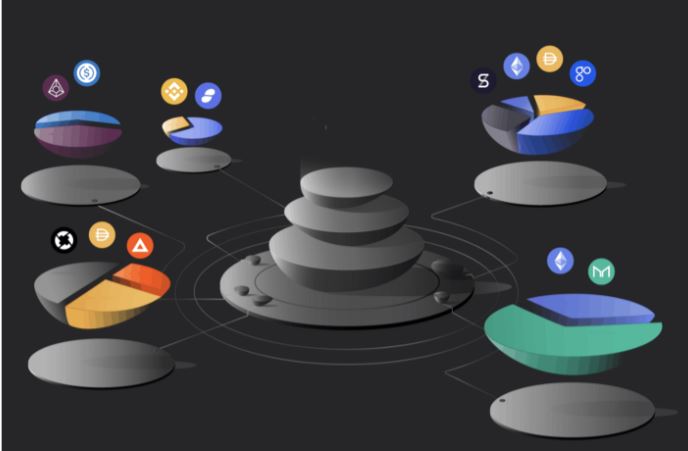Since last year, we have been bombarded with the term “liquidity,” albeit it was mostly in reference to the US Federal Reserve flooding the economy with fiat liquidity. In simple terms, liquidity is the ease with which an asset can be converted into cash.
In crypto land, liquidity is how quickly one coin can be converted to other coins or cash. A liquid market makes it easier and cheaper to buy and sell crypto assets.
Understanding the liquidity pools
Traditional stock exchanges or a centralized crypto exchanges like Binance and Coinbase use the Order Book model where buyers and sellers place their orders. Buyers want to pay the lowest price while sellers want the highest price possible.
What if buyers and sellers don’t agree on the price? What if you want to buy something, but there is no seller at the moment? When a seller appears, they might demand much higher than what you’d be offering to pay.
That’s the issue “market makers” solve by offering to buy or sell an asset. Market makers provide liquidity, allowing people to buy and sell without having to wait for the counterparty to show up.
However, relying heavily on external market makers reduces the speed of transactions and increases the costs. In decentralized finance (DeFi), Liquidity Pools are addressing this issue. The success of liquidity pools is evident from the fact that there is more than $60 billion worth of value locked in DeFi protocols.
Liquidity pools have become an integral part of borrowing and lending protocols, automated market makers (AMMs), synthetic crypto assets, blockchain gaming, yield farming, on-chain insurance, and more.
They eliminate the need to match a buyer with a seller to complete an exchange. Instead, users trade in and out of a pre-funded pool of tokens.
Individuals and organizations who lock their crypto assets in a smart contract are rewarded for providing liquidity.
Liquidity pools create a market for a specific pair of assets. The liquidity providers receive incentives in proportion to the amount of liquidity they supply to the pool. When an exchange takes place, the transaction fee is proportionately distributed among all the liquidity providers.
Now that you have a basic understanding of liquidity in crypto terms, let’s look at some of the best automated liquidity protocols out there.
Uniswap
Uniswap is one of the most successful liquidity protocols with more than $4 billion worth of cryptocurrencies deposited on its platform. It is an ERC20-based automated liquidity protocol.
You can become a liquidity provider by depositing an equivalent value of each underlying token in a liquidity pool. You’ll get pool tokens in return. The pool tokens track your share of the total reserves. You can redeem them anytime.
Uniswap is a fully decentralized and open-source platform. Anyone can copy its code to create another decentralized exchange. Users can even list their tokens on the platform for free, and can maintain control of their funds at all times.
If the platform ever gets hacked, you won’t lose your assets. Uniswap’s native token is UNI, which is used for governance. It gives users the right to vote on new developments and changes to the platform.
Balancer
Balancer is a leading decentralized exchange built on Ethereum and Polygon (Matic). Like Uniswap, it’s designed to provide the most optimal prices by pooling investors crowdsources liquidity, and then match the best price with their SOR (Smart Order Router). In addition, Balancer flips the paradigm of index fund with a twist, as users collect fees from traders that rebalance your portfolio automatically, instead paying portfolio managers in the “centralized world”.
The project recently announced together with Polygon a $10 million joint liquidity mining program to foster adoption and growth. The project recently raised over $20 Million dollars from notable investors and is rapidly taking the center stage at becoming one of the biggest and more reputable liquidity protocols.
AAVE
Aave is a decentralized and open-source liquidity protocol. It has become one of the largest lending and borrowing protocols in just a few years. Users can lend cryptocurrencies to the platform’s liquidity pools and earn interest on their deposits. Borrowing and lending is controlled by smart contracts.
Aave is particularly known for its Flash Loan feature, which allows you to borrow assets without any collateral. However, the borrowed assets must be returned within one blockchain transaction. It is more suitable for developers.
The protocol is based on Ethereum. It stores funds on a non-custodial smart contract, meaning your crypto assets are never directly stored with Aave. You are always in control of your cryptocurrencies.
The platform’s native token is AAVE, which is used for governance, staking, fees, and rewards. Interest rates on Aave are dynamic, and depend on the utilization of the liquidity pools.
Aave CEO Stani Kulechov has announced that people will soon be able to use NFTs as collateral for borrowing on the platform.
BENQi
BENQi is the first Avalanche-based algorithmic liquidity market. It aims to democratize DeFi by addressing problems that haunt the Ethereum-based liquidity providers. Congestion and high gas fees are still major issues on Ethereum.
Since BENQi uses Avalanche instead of Ethereum, it allows investors to instantly supply and withdraw liquidity from the market.
Users can also borrow assets using the cryptocurrencies they supply as collateral. If you have idle assets, you can lend them to earn attractive interest rates. BENQi provides live and transparent interest rates depending on the supply and demand of an asset.
Unlike other lending and borrowing protocols that rely on a block-based approach, BENQi uses a time-based approach to offer the most accurate rates.
Avalanche is capable of handling more than 4,500 transactions per second, which is a major upgrade over Ethereum’s 14 transactions. BENQi’s transaction fee is also among the lowest at $0.70 per transaction.
Avalanche is compatible with popular plugin wallets like Metamask. It is also highly decentralized with more than 900 validator nodes. People who want to port their holdings from Ethereum to Avalanche can do so using the Avalanche-Ethereum bridge (AEB).
Curve
Curve Finance is an Ethereum-based decentralized liquidity protocol. It primarily offers stablecoin trading. Stablecoins are cryptocurrencies whose value is linked to an outside asset such as the US dollar. Tether (USDT) is an example of a stablecoin. The value of one USDT is always equivalent to $1.
Curve boasts low slippage and minimal fees because stablecoins are far less volatile than other cryptocurrencies.
It is cheaper and faster than other Ethereum-based protocols such as Uniswap. There has been a growing need among traders to swap stablecoins efficiently and economically as the adoption of cryptocurrencies keeps growing.
Curve rewards users for providing liquidity to the protocol.
CRV is the native token of the Curve ecosystem. It is used to govern the protocol and reward the liquidity providers. Besides the staking rewards, liquidity providers receive CRV tokens when they lend their cryptocurrencies to the system.
The liquidity pools are managed by an automated market maker (AMM), which rebalances pools after a transaction has taken place.
MakiSwap
MakiSwap is a yield farming and AMM platform developed by the Unilayer team. It is the first dedicated AMM and yield farm on the Huobi Eco Chain (HECO). MakiSwap crossed the milestone of $50 million in total value locked (TVL) in just five days of its launch on HECO last month.
The platform offers greater liquidity, cheap gas fees, and fast transaction speeds. MakiSwap’s native token is MAKI. It incentivizes network participants through revenue sharing and forum-driven network efforts. MakiSwap rewards liquidity providers for adding liquidity to the AMM.
To start earning rewards in the form of MAKI tokens, all you have to do is add liquidity into a pool. There are liquidity pools for a number of token pairs including LAYER/MAKI, HT/MAKI, MAKI/HUSD, HT/HUSD, LAYER/HT, ETH/HUSD, BTC/HUSD, USDT/HUSD, and USDT/HT.
OpenOcean
OpenOcean is the world’s first full aggregator that acts as a bridge between DeFi and CeFi. It gives individual and institutional investors access to crypto trading and pools liquidity.
OpenOcean is known for offering users the best prices and lowest slippage across DeFi and CeFi. The platform uses D-star algorithms that split routing between different protocols to give users the best possible rates. It also provides arbitrage tools to let users do arbitrage transactions automatically.
The platform scours the DEXs and CEXs for the best price before enabling users to execute their orders. It also aggregates other services such as yield generation, lending, insurance, and derivatives on both CeFi and DeFi.
OpenOcean’s native token is OOE, which is used to govern the platform. The OOE token holders enjoy liquidity rewards by participating in liquidity mining programs. Other benefits for the OOE holders include reduced trading costs and slippage subsidies.
Conclusion
Liquidity protocols have solved one of the biggest pain points in the decentralized finance ecosystem. DeFi is well on its way to not only disrupt the traditional finance but also change the rules of the game by putting power directly in the hands of users. Other projects like SushiSwap and 1Inch also deserve an honorable mention as the top players in the field, and a slew of others are joining the ecosystem.
Disclaimer: This article is provided for informational purposes only. It is not offered or intended to be used as legal, tax, investment, financial, or other advice.
Credit: Source link























